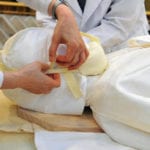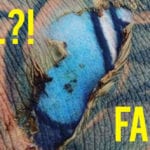 Mysteries
Mysteries  Mysteries
Mysteries  History
History 10 Surprising Stories About the Texas Rangers
 Humans
Humans 10 Philosophers Who Were Driven Mad by Their Own Theories
 Miscellaneous
Miscellaneous 10 Video-Game-Worthy Weapons and Armors from History
 Weird Stuff
Weird Stuff 10 Psychics Who Accurately Predicted Wartime Events
 The Arts
The Arts 10 Pieces of Art Inspired by a Broken Heart
 Health
Health 10 Science Fiction-Sounding New Medical Treatments
 History
History 10 Surprising Facts About the Father of Submarine Warfare
 Space
Space Ten Astonishing New Insights into Alien Worlds
 Weird Stuff
Weird Stuff 10 Bizarre Summer Solstice Rituals Still Practiced Today
 Mysteries
Mysteries Top 10 Haunting Facts About the Ghost Ship MV Alta
 History
History 10 Surprising Stories About the Texas Rangers
 Humans
Humans 10 Philosophers Who Were Driven Mad by Their Own Theories
Who's Behind Listverse?

Jamie Frater
Head Editor
Jamie founded Listverse due to an insatiable desire to share fascinating, obscure, and bizarre facts. He has been a guest speaker on numerous national radio and television stations and is a five time published author.
More About Us Miscellaneous
Miscellaneous 10 Video-Game-Worthy Weapons and Armors from History
 Weird Stuff
Weird Stuff 10 Psychics Who Accurately Predicted Wartime Events
 The Arts
The Arts 10 Pieces of Art Inspired by a Broken Heart
 Health
Health 10 Science Fiction-Sounding New Medical Treatments
 History
History 10 Surprising Facts About the Father of Submarine Warfare
 Space
Space Ten Astonishing New Insights into Alien Worlds
 Weird Stuff
Weird Stuff 10 Bizarre Summer Solstice Rituals Still Practiced Today
Top 10 Little Known Facts About Terror
For centuries, extremes of human terror have had two broad effects on human bodies. At one level fear has caused people to go temporarily blind, mute or deaf, or to suffer paralysis: a reaction known as Conversion Disorder, in the sense that mental terror is converted into physical effects on the body. At another, it has actually killed people – including grown men and hardened soldiers. The fatal form of this terror is usually magical or supernatural – although not quite always.
Top 10 Fascinating Facts About Fear
10 Magical Terror in the New Testament
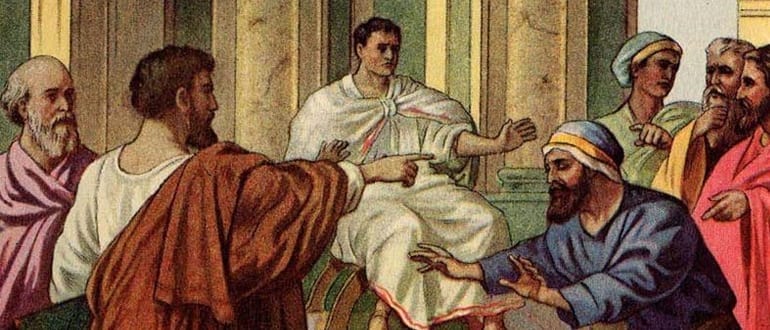
There were many cases of Conversion Disorder in and after World War One. Essentially, the body converted mental terror into bodily harm. Soldiers suffering from shell shock (PTSD) would become mute or deaf without any obvious medical cause. Further back, in Puritan New England, terror of supposed witches caused paralysis of limbs or even temporary stoppage of urine.
But probably the most extraordinary (and surprisingly little known) case of Conversion Disorder is recorded in the New Testament. In Acts, St Paul gets into a stand-off with a magician, Bar-jesus, on Cyprus. He denounces Bar-jesus, in what would seem to be a curse. ‘Thou enemy of all righteousness … behold, the hand of the Lord [is] upon thee, and thou shalt be blind, not seeing the sun for a season.’ And Paul also ‘looks intently’ at him (the Greek word is atenisa, used only twice in the Bible). The result is that Bar-jesus, who as a magician has an intense fear of the Evil Eye, goes temporarily blind. ‘And immediately there fell on him a mist and a darkness; and he went about seeking some to lead him by the hand.’[1]
9 Voodoo Death

‘I have seen more than one hardened old Haussa soldier dying steadily and by inches because he believed himself to be bewitched; no nourishment or medicines that were given to him had the slightest effect either to check the mischief or to improve his condition in any way’. So said the soldier A.G. Leonard, giving a firsthand account of Voodoo Deaths amongst the tribes of the Lower Niger in West Africa. A missionary, John Roscoe, saw similar things in East Africa in the 1920s. After a hunt, three tribesmen were wounded by a leopard. Two recovered, but the one with the slightest wound insisted that he was dying. Believing that the leopard had been caused by magic to attack him, he died within a day.
Time and again, Voodoo Deaths show the same signs. The victim gives up all hope, perhaps foams at the mouth, and then lies down, dying in a space of one to three days. As well as supposed bewitchment, eating of food held to be ‘taboo’ was a cause. In one case in Australia a kind of ‘double proof’ of the deadly power of magic was seen. After an indigenous man was cursed and seemed to be dying, a missionary convinced the assailant to tell his victim that it was all merely a joke. At this the victim recovered – though he too had come close to simply dying of belief.[2]
8 What to do when caught in the teeth of a lion
Just what is the precise physiology of extreme fear? Attacked by a predator and seemingly facing death, a human or animal can revert to a last-ditch evolutionary mechanism ‘known as “tonic immobility” or quiescence – in lay terms, “playing possum”. When a person or animal ‘is seized by an attacker, the caudal ventrolateral region’ of the brain ‘generates a response that, from the outside, looks like total collapse … The body, insensitive to pain, goes completely limp, often falling to the ground with limbs splayed and neck thrown back. Eyes closed, it trembles, defecates, and lies still. It looks, in a word, dead.’
The quoted words are those of Jeff Wise, a contemporary adventurer and scientist of fear. Wise offers some memorable examples of this strange evolutionary response. Explaining that ‘many predators will not eat prey that looks dead’, he cites the case of the missionary David Livingstone, who fell into this state when he was quite literally caught in a lion’s teeth. The lion dropped the unappetising explorer and moved off after some hunters who were quite clearly alive. Wise adds that ‘if quiescence goes on too long … heart rate and blood pressure can plunge dramatically, indeed to the point of death’.
7 Sudden Death
Voodoo Death usually takes at least a day to claim its victim. But in many other cases, people have died of terror in a matter of hours, minutes, or even seconds. The cause seems to be a sudden overstimulation of the vagus nerve leading to the heart. ‘Vagal Inhibition’ can be triggered by a surprising number of factors. Fear is one. But others look like combined mental and physical shock. Bernard Knight explains that a sudden tap on the shoulder, immersion in cold water, or tooth extraction have all been triggers.
Batsmen struck by cricket balls have been killed by Vagal Inhibition. In Birmingham a small girl lost in weeds was found to have died of Vagal Inhibition, and a 12 year old girl to have done so after her dog ran in front of a car (although, ironically, the dog was unharmed.) The same fate befell a Pakistani man attacked in his car by racist thugs, even though he drove away unscathed.[3]
6 Dead on his feet

Join me now for a glimpse of a macabre out-take from Sherlock Holmes or Jonathan Creek. In London over 200 hundred years ago, a boy was found dead in a sealed room, with not a mark or scratch upon his body. As The Times explained in July 1811, a nine year old boy had been missing for several days, after failing to return home from school. And, ‘last Tuesday morning he was found dead in one of the vaults of St George’s chapel, Paddington. The body was standing against the wall of the vault. His bag, with his schoolbooks, was on his shoulder; there were several coffins in the vault. It is conjectured that the boy had been led there by curiosity, to see a funeral, and that having been inadvertently shut in, he died of fright.’
Given how many grown adults died of terror of ghosts in this period, it is little wonder that the boy died of fear in these grim surroundings. Was the fatality caused by Voodoo Death or Vagal Inhibition? The child was clearly trapped long enough for the former to occur. But the fact that he was still standing, bag on shoulder, suggests that in fact he died in just seconds or minutes.[4]
Top 10 Strange And Scary Psychological Effects
5 The Original Nightmares on Elm Street
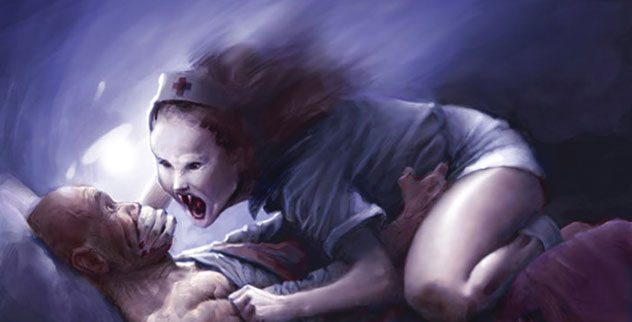
Even in modern, relatively secular cultures, Sleep Paralysis Nightmares can be overwhelmingly terrifying. Waking to find themself speechless and motionless, the victim is then attacked by some menacing entity. Two nineteenth century works on Nightmare (by John Waller and Robert MacNish) both insisted that such experiences had scared people to death. Waller cited a young carpenter, subject to severe nightmare attacks all his life, who was found dead in his bed one morning.
Much later, in America in the 1970s and 80s, a pattern of strange deaths was detected among Hmong immigrants from wartorn Cambodia. Time and again, apparently healthy men in their thirties were found dead in their beds, sometimes with looks of terror on their faces. Shelley Adler, author of Sleep Paralysis, ultimately concluded that they feared ancestral spirits, believing these were angry, as in America the Hmong could not carry out the usual rituals these spirits required. It was indeed the early phase of these deaths which inspired director Wes Craven to create his infamous film, Nightmare on Elm Street.[5]
4 Witchcraft
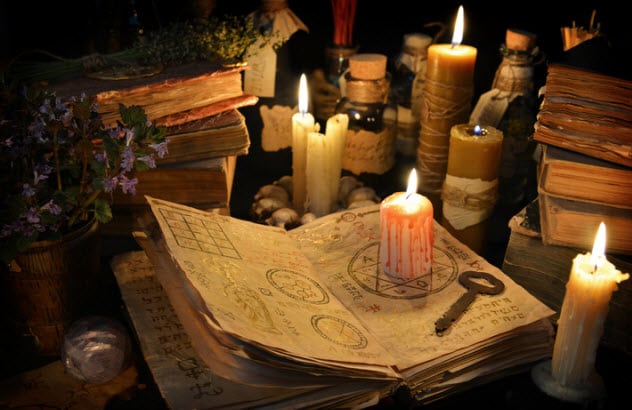
As the name itself implies, ‘Voodoo Deaths’ were typically associated with so-called primitive tribes, from Africa, South America or Australasia. But in fact such deaths occurred all across white Christian Europe, persisting through the nineteenth century and perhaps beyond. During a famous vampire panic in Medvegia in 1731, a young woman named Stanoska died of terror, after suffering Nightmares in which a recently dead villager seemed to be throttling her.
Given what we have heard about witchcraft and Conversion Disorder, it would be surprising if a significant number of people did not also die of their fear of witches. On 14th April 1621, Elizabeth Sawyer of Edmonton was charged with various crimes performed by supposed witchcraft. On 19th April she was hanged as a witch at Tyburn. One piece of evidence damning her was the death of Agnes Ratcliff, a neighbour who believed herself cursed after an argument with Sawyer about a pig. Ratcliff’s husband described his wife suffering fits, foaming at the mouth, and lying down in her bed, where she died within four days. The famous play of this same year, The Witch of Edmonton, was unable to make sense of this, and had Ratcliff beating her own brains out in a fit of madness. But in fact she must have died of Voodoo Death. She was killed by her belief in witchcraft, and her fate also helped seal that of the innocent Sawyer soon after.[6]
3 The Ghost which killed a sceptic
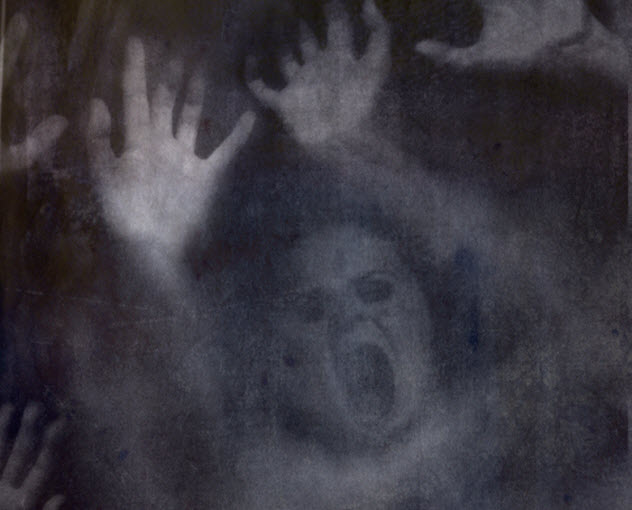
Terror of witches remained intense amongst ordinary people in Britain right through the nineteenth century. The degree of fear inspired by supposed witches can be gauged by the appalling violence directed at them, despite the fact that the 1736 Witchcraft Act had effectively outlawed witchcraft accusations. The one thing which rivalled witchcraft in the popular mind was the ghost.
It took me a long while to accept that ghosts really do exist. In a house in Sheffield that realisation came with tragic suddenness for one Mrs Rollinson in spring 1855. A lodger in the property, Harriet Ward, swore that she had a seen the spectre in the kitchen-cellar. As often happened at this time, rumours of the haunted house quickly drew large crowds on the street outside. The inhabitants therefore wished to fix up a blind over the cellar window, to keep out prying eyes; but most were too scared to venture down into the haunted area of the building. Mrs Rollinson, a sceptical visitor to the house, headed down with brisk impatience to perform the task, but suddenly screamed that she had seen something on the stairs, and swiftly fainted. A little later she recovered sufficiently to state that a woman in white had rushed past her. She died around noon the next day, in the space of twenty four hours.[7]
2 The Tower of London Ghost
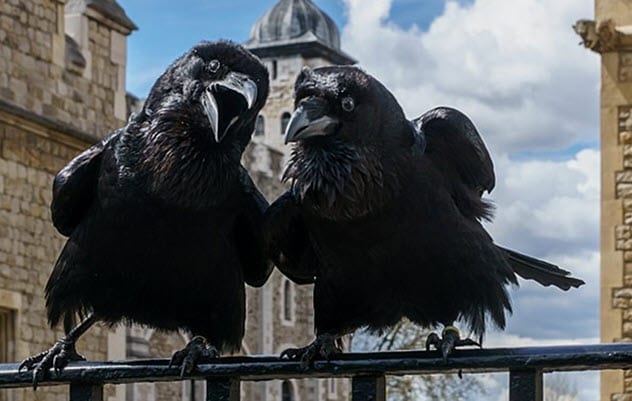
Much evidence suggests that dying an early, unnatural or unpleasant death causes people to return as ghosts. It is hardly surprising, therefore, that so many ghost reports, by virtually every type of person, have come from the Tower of London. Witnesses have always been plentiful, with the building staffed by residents and soldiers, even when tourists are absent.
In January 1816 one resident family complained of strange and unpleasant noises throughout their house, whilst sentries at the door of the Royal Regalia reported violent knockings and hollow groans. Late one Thursday night the sentry on the door was heard roaring and screaming, and presently found unconscious on the ground. On recovering he explained that a small figure had crept under the door towards him, growing to human size before changing again, now to the form of a ghostly dog. This soldier lingered in a state of prostrate terror for some days, and before the end of January he had died. This man may have survived the Napoleonic wars. But, like all those other hardened warriors reduced to childlike terror by vampires, witches or ghosts, the sentry had again died of fear.[8]
1 The Ghost of Lady Alington
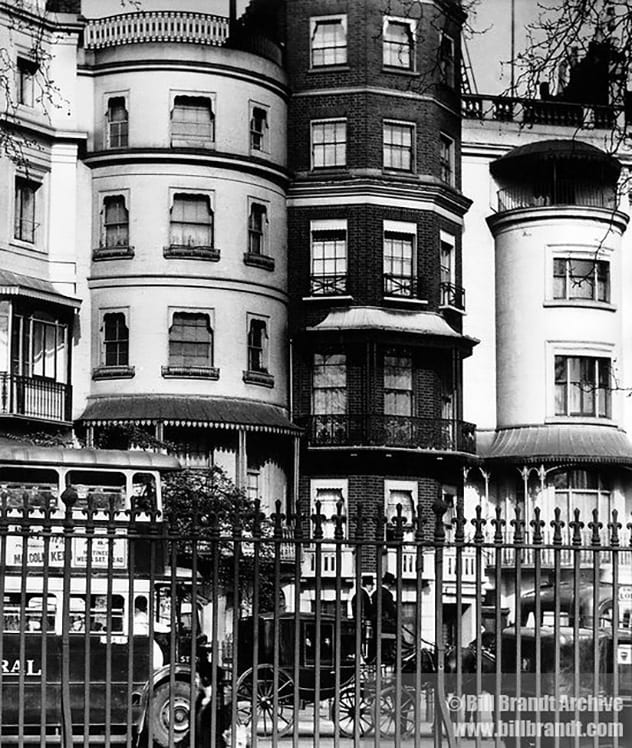
It also seems that ghosts could scare Britons to death right in the heart of London’s Mayfair in the 1930s. In August 1934 a coroner’s inquest was held on the death of Frederick Walker Wallace, who had been found dead at the home of his employer, Lady Alington. Employed as Lady Alington’s caretaker for 18 years, Wallace had recently been telling a visiting Police Officer of his terror at seeing Lady Alington in recent days. He was terrified because she herself had died in early July. On Saturday 4 August Wallace was found hanging in the boiler house in the basement. A message found pencilled on the basement door ran: “Farewell, fellow tradesmen, he is not dead but sleeping.”
Having seen Lady Alington’s ghost for some time, Wallace had become increasingly terrified of being alone in the house as sole caretaker. It was not long after the departure of the cook and chauffeur that he hung himself. Or rather… tried to hang himself. The coroner refused to believe that Wallace had seen a ghost, ‘because ghosts are, of course, a delusion or illusion of the mind.’ Yet the coroner had to admit that Wallace had not died from the attempted hanging, but from shock. Desperate for a non-ghostly explanation, he insisted that the shock of attempted suicide had killed Wallace. In reality, the cause was almost certainly one more appearance of Lady Alington, triggering vagal inhibition. Ironically, she may well have come back to try and save Wallace’s life.[9]
10 Common Things That Are Far More Dangerous Than The Things You Actually Fear

